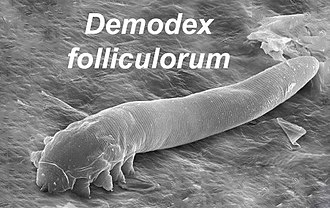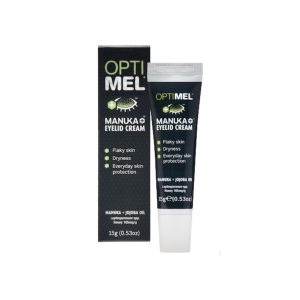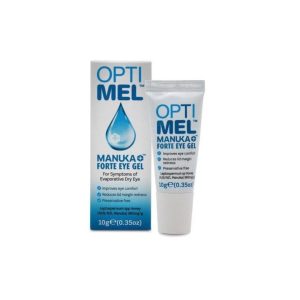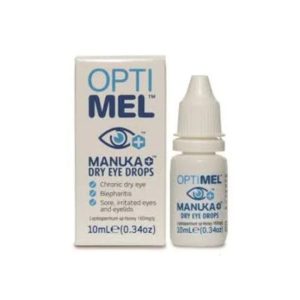Are you experiencing persistent dryness, irritation, or discomfort in your eyes? If yes, you may be among the many individuals dealing with chronic dry eye conditions potentially linked to Demodex mites. These tiny, eight-legged organisms are a natural part of the human skin ecosystem, particularly around the eyes and eyelids. However, when their numbers grow excessively, they can trigger inflammation and worsen the symptoms associated with dry eye syndrome, leading to significant discomfort and disruption in daily life.
If you’ve struggled with ongoing unexplained dry eye issues, it’s crucial to explore whether Demodex mites could be a significant factor contributing to your symptoms. In this comprehensive guide, we will help you identify the signs of a Demodex infestation, explain how these mites relate to dry eye disease, and provide effective treatment options to help manage their population and alleviate your discomfort effectively.

Recognizing Distinct Symptoms of Demodex Blepharitis
People suffering from Demodex Blepharitis or an overabundance of these mites often encounter a range of distinct symptoms that can be quite distressing. Common indications include:
- Burning, stinging, or gritty sensations in the eyes, especially noticeable towards the end of the day, which can significantly impact your comfort.
- Unexplained excessive tearing or watery eyes that are not attributable to allergies or environmental factors.
- Red, inflamed eyelids, along with irritation of the skin surrounding the eyes, which can lead to further complications.
- Crusty, dandruff-like buildup along the lashes and lid margins, often presenting as collarettes, which can be bothersome.
- Extreme sensitivity to light, causing discomfort and making it feel as if your eyes are consistently squinting.
- Episodes of blurred vision that can fluctuate throughout the day, further complicating daily activities.
Many individuals endure these dry eye symptoms for extended periods without realizing that an infestation of Demodex mites may be a crucial underlying cause. Identifying these symptoms is a critical step in effectively addressing the root issue and finding relief.

Understanding How Demodex Mites Cause Dry Eye Symptoms
Wondering how these minuscule creatures can lead to such distressing dry eye symptoms? Demodex mites thrive on the oils and cells found on the skin, particularly within the hair follicles of your eyelashes. As they feed, they leave behind waste products, eggs, and remnants of deceased mites, which accumulate along the lid margins. This buildup creates a thick layer of debris and a bacterial biofilm that can obstruct the delicate oil glands essential for maintaining eye health.
When these oil glands are unable to release sufficient oils, it results in the rapid formation of dry patches on the eye’s surface. This oily tear film is crucial for preventing the quick evaporation of the watery tears that keep our eyes moist and comfortable. The inflammation triggered by the blockage can further intensify eye irritation, redness, and the uncomfortable gritty sensation often associated with dry eye conditions.
Mastering the Life Cycle of Demodex Mites for Effective Treatment
Comprehending the life cycle of Demodex mites is vital for developing effective treatment strategies. These mites progress through distinct stages: egg, larva, nymph, and adult, over a life cycle that spans approximately 14 to 21 days. They are most active during the night, leaving their hair follicles to mate and lay new eggs on the skin’s surface.
This nocturnal behavior suggests that the optimal time to apply Demodex treatments is during the evening, just before bedtime. By targeting the mites when they are most active, you can significantly enhance the effectiveness of your treatment regimen. However, due to their rapid reproductive capabilities, any surviving mites can quickly repopulate, making continuous treatment essential over several weeks or even months to achieve lasting results.
Effective Strategies for Managing Demodex-Related Dry Eye Issues
If your optometrist confirms a high count of Demodex mites through eyelash sampling or microscopic examination, they may propose a variety of treatment options designed to combat the infestation:
1. Effective Use of Tea Tree Oil Eyelid Wipes and Scrubs
Products containing tea tree oil boast powerful antimicrobial and antiparasitic properties, making them exceptionally effective in eliminating mites. These formulations can effectively remove surface mites, break down collarettes produced by these pests, and help draw out buried mites, rendering them more susceptible to treatment.
Although tea tree oil is effective against mites, it can cause stinging upon application and may be cytotoxic to healthy cells, potentially inflaming and worsening symptoms for some patients. Regular application of tea tree oil eyelid wipes or scrubs before bedtime can gradually reduce the mite population. A notable example of a potent tea tree oil treatment is OcuSoft Oust Foam, which is particularly effective for managing blepharitis primarily caused by Demodex mites.
2. Gentle and Effective Use of Hypochlorous Acid Lid Hygiene Sprays
Hypochlorous acid is a naturally occurring substance produced by our immune system, serving as an effective antimicrobial agent. It is gentle on the eyes, does not cause stinging, and is safe for our cells, making it an ideal choice for sensitive eye care.
Disinfecting lid sprays and cleansing foams that contain hypochlorous acid not only eliminate mites but also help reduce inflammation and provide relief from uncomfortable symptoms. Applying these solutions to the lash lines before bed can effectively eradicate mites and their debris. Many of these products have a distinctive odor reminiscent of chlorinated pool water. Popular hypochlorous acid-based solutions include Ocusoft Hypochlor Spray and Avenova.
Among these, Ocusoft Hypochlor Foam is often recommended due to its superior value and extended shelf life after opening, making it a practical choice for ongoing management of eye health.
3. Exploring the Benefits of Manuka Honey Solutions for Eye Care
Recent research suggests that Manuka Honey solutions may prove to be as effective as 50% tea tree oil against Demodex, although further studies are needed in this area for conclusive evidence. While it may induce a slight sting upon application, Manuka Honey is generally less irritating than tea tree oil and exhibits excellent efficacy against various forms of blepharitis. It is non-cytotoxic and less likely to provoke inflammation in the eyelids.
Numerous patients report that any initial sting is well worth it, as they often experience significant relief afterward. Manuka Honey solutions are available in gel form (such as Optimel Forte, which is more effective but may sting more) and as drops (like Optimel Drops, which are easier to apply and sting less).
4. Addressing Severe Demodex Infestations with Oral Anti-Parasitics
In cases where Demodex overpopulation is severe and persistent, healthcare professionals may choose to prescribe oral antiparasitic medications. For instance, formulations such as Ivermectin in pill form have shown effectiveness in managing these infestations. Additionally, weekly doses of oral tea tree oil supplements taken over several months can help maintain mite levels in check and provide longer-lasting relief from the disruptive symptoms.
5. Exploring Professional Treatments for Advanced Demodex Management
Some eye clinics offer intensive in-office treatments specifically designed for Demodex management, utilizing specialized products such as Oust Demodex Cleanser Swabstix or a handheld electric brush known as BlephEx.
The Oust Demodex Cleanser Swabstix provides targeted treatment options that can effectively mitigate the impact of these bothersome mites, offering patients much-needed relief.
The Article: Demodex Mites Linked to Chronic Dry Eye Issues first appeared on https://writebuff.com.
The Article Demodex Mites and Their Connection to Chronic Dry Eye Was Found On https://limitsofstrategy.com





It’s fascinating to consider how something as small as Demodex mites can have such a significant impact on our daily lives, especially regarding discomfort that seems so innocuous at first. My own journey with chronic dry eye has been eye-opening—pun intended! Initially, I had no idea that tiny organisms might be behind my persistent irritation. The thought that they could thrive in our ecosystem and affect our well-being is a reminder of how delicately balanced our bodies are.
It really is intriguing how much these tiny entities can influence our daily lives, isn’t it? Your journey with chronic dry eye resonates with me. I’ve had my own bouts with skin irritation linked to Demodex mites, and it truly makes you appreciate how interconnected our bodies are with these microscopic beings.
I recently came across some helpful makeup tips that really cater to sensitive skin and could be a game changer for anyone grappling with dry eyes like I have—it’s intriguing how the right cosmetics can make a world of difference.
‘Makeup Tips for Sensitive Skin: Best Cosmetics for Dry Eyes’
https://ishevents.org/makeup-tips-for-sensitive-skin-best-cosmetics-for-dry-eyes/.
It’s really fascinating, isn’t it? The way these tiny creatures like Demodex mites can have such a significant impact on our daily lives is almost surreal. It’s a reminder of how complex our bodies are and how intertwined we are with the microbial world around us. Your experience with skin irritation really highlights that connection.
It is indeed fascinating. The relationship we have with tiny creatures like Demodex mites really serves as a profound reminder of how much we still don’t fully understand about our own bodies. I remember when I first learned about them and how they can live on our skin without causing any harm—until they do. It made me think about all the unseen interactions happening constantly and how delicate that balance can be.
It’s interesting how our skincare choices can really affect our overall comfort; I recently came across some practical makeup tips that could really help those of us with sensitive skin and dry eyes.
‘Makeup Tips for Sensitive Skin: Best Cosmetics for Dry Eyes’
https://ishevents.org/makeup-tips-for-sensitive-skin-best-cosmetics-for-dry-eyes/.
It really is fascinating how even the smallest creatures can have such a significant impact on our lives. I had no idea how much Demodex mites could affect skin health until I dealt with some irritation myself. It’s interesting to think about how our bodies are these ecosystems, not just in terms of microbes but also in how we interact with our environment.
It’s so true that even the tiniest creatures like Demodex mites can play a major role in our skin health. Until I learned about them, I had only ever thought about the more visible pests. It’s fascinating to think of our bodies as these complex ecosystems. Each little organism has its own role, and it really highlights the balance we need to maintain for optimal health.
Your exploration into the connection between Demodex mites and chronic dry eye conditions is both timely and crucial for many individuals unknowingly grappling with these issues. As someone who has experienced persistent dry eyes, I found your insights particularly resonant. It’s intriguing how the human body hosts organisms that can turn problematic under certain conditions. This underscores the delicate balance of our skin microbiome and how external factors, such as environmental conditions or increased stress levels, can influence this balance.
I never realized Demodex mites could be such a significant factor in dry eye issues until I read this! It’s interesting how these tiny organisms can influence our comfort without us even being aware of them. I’ve had persistent dryness myself and have tried various treatments, but no one ever suggested considering mites as a potential culprit.